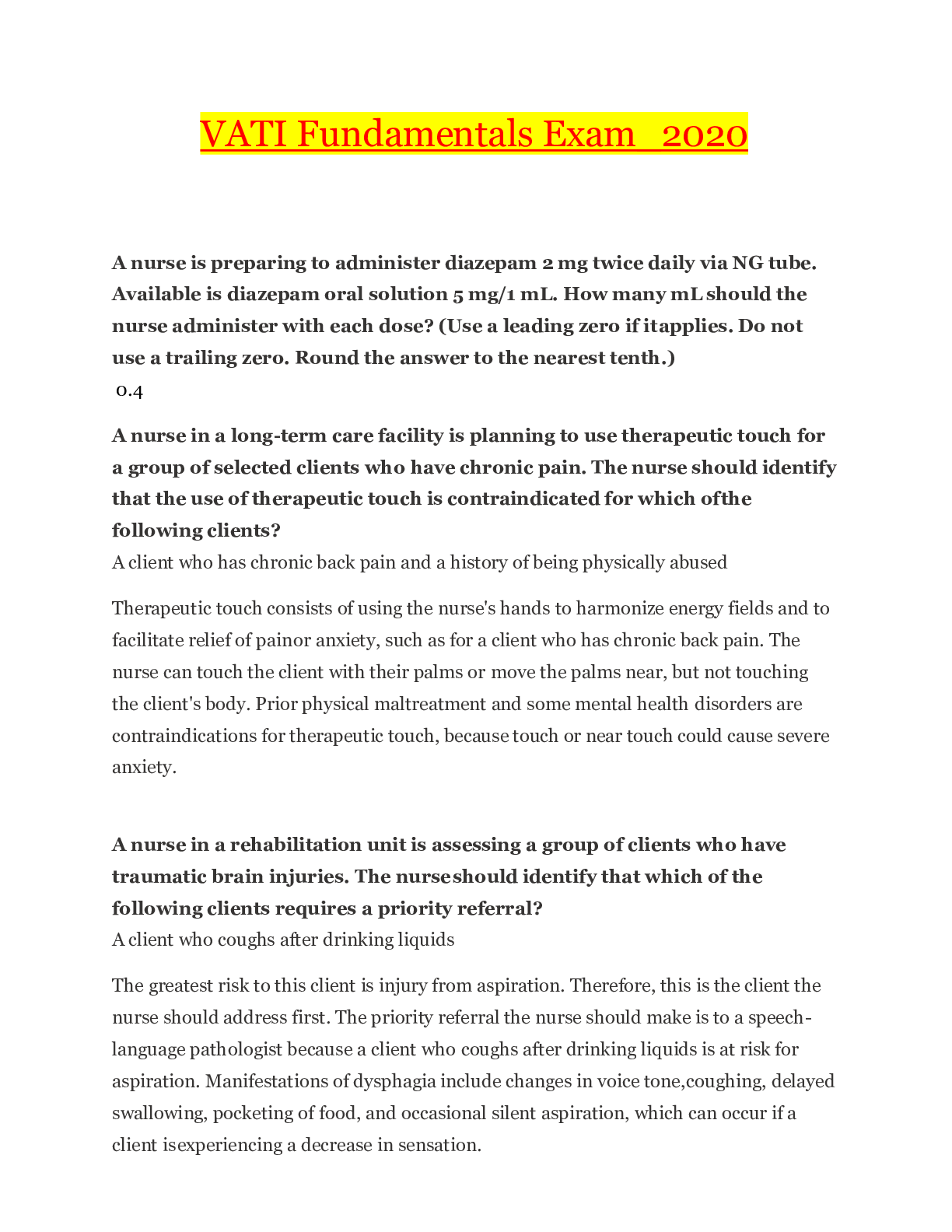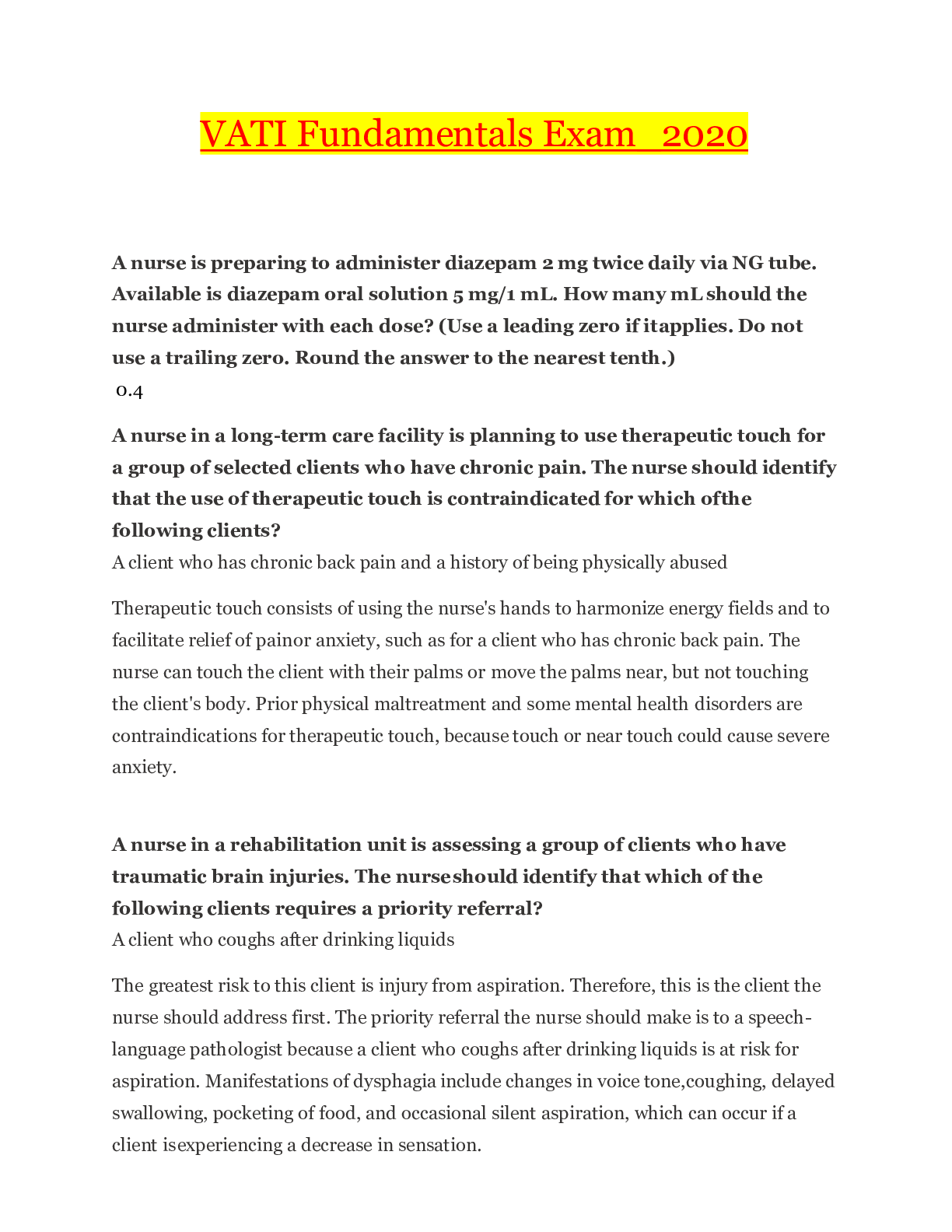Health Care > VATI RN > RN VATI MED SURG ASSESSMENT REMEDIATION STUDY GUIDE 2021 (All)
RN VATI MED SURG ASSESSMENT REMEDIATION STUDY GUIDE 2021
Document Content and Description Below
RN VATI MED SURG ASSESSMENT REMEDIATION STUDY GUIDE RN VATI MED SURG ASSESSMENT REMEDIATION/RN VATI MED SURG ASSESSMENT REMEDIATION. Safety and Infection Control – (1) Home Safety – (1... ) Home Safety: Evaluating Client Understanding of Fall Prevention (Active Learning Template – Basic Concept, RM FUND 9.0 Ch 13) • Teach client to remove items that could cause the client to trip, such as throw rugs and loose carpets. Place electrical cords and extension cords against a wall behind furniture. Monitor gait and balance, and provide aids as needed. Make sure that steps and sidewalks are in good repair. Place grab bars near the toilet and in the tub or shower and install a stool riser. Use a nonskid mat in the tub or shower. Place a shower chair in the shower and provide a bedside commode if needed. Ensure that lighting is adequate inside and outside the home. Health Promotion and Maintenance – (1) Aging Process – (1) Angina and Myocardial Infarction: Preventing Coronary Artery Disease (Active Learning Template – System Disorder, RM AMS RN 10.0 Ch 31) • Maintain an exercise routine to remain physically active. Consult with a provider before starting any exercise regimen. Have cholesterol level and blood pressure checked regularly. Consume a diet low in saturated fats and sodium. Consult with a provider regarding diet restrictions. Promote smoking cessation. Basic Care and Comfort – (3) Non-Pharmacological Comfort Interventions – (1) Osteoarthritis and Low-Back Pain: Potential Contraindications to Chondroitin and Glucosamine (Active Learning Template – System Disorder, RM AMS RN 10.0 Ch 72) • Contraindicated for clients who have hypertension or are pregnant or breastfeeding. Chondroitin can cause bleeding, especially for clients taking anticoagulants. Can cause mild GI upset (nausea, heartburn). Use with caution with shellfish allergy. Question clients about concurrent use of chondroitin, NSAIDs, heparin, and warfarin Nutrition and Oral Hydration – (2) Hemodialysis and Peritoneal Dialysis: Dietary Needs for a Client Who Is Starting Hemodialysis (Active Learning Template – System Disorder, RM AMS RN 10.0 Ch 57) • Eat well-balanced meals to include foods high in folate (beans, green vegetables), and take supplements. Each exchange during dialysis depletes protein, requiring the client to increase protein intake over predialysis limitations, but it still might require some restriction. Peptic Ulcer Disease: Complications of Dumping Syndrome (Active Learning Template – System Disorder, RM AMS RN 10.0 Ch 49) • This can occur following gastrectomy surgery, and is a group of manifestations that occur following eating. A shift of fluid to the abdomen is triggered by rapid gastric emptying or high-carbohydrate ingestion. The rapid release of metabolic peptides following ingestion of a food bolus causes dumping syndrome. • The client can report a full sensation, weakness, diaphoresis, palpitations, dizziness, and diarrhea. Vasomotor symptoms that can occur 10 to 90 min following a meal are pallor, perspiration, palpitations, headache, feeling of warmth, dizziness, and drowsiness. • Late symptoms of dumping syndrome can be related to the rapid release of blood glucose, followed by an increase in insulin production resulting in hypoglycemia • Nursing actions: • Monitor for vasomotor manifestations. Assist/instruct the client to lie down when vasomotor manifestations occur. Administer medications (ocreotide subcutaneously can be prescribed if manifestations are severe and not effectively controlled with dietary measures. Octreotide blocks gastric and pancreatic hormones, which can lead to findings of dumping syndrome. Acarbose slows the absorption of carbohydrates) malnutrition and fluid electrolyte imbalances can occur due to altered absorption. Monitor I&O, laboratory values, and weight. • Client education: • Lying down after a meal slows the movement of food within the intestines. Limit the amount of fluid ingested at one time. Eliminate liquids with meals for 1 hr prior to, and following a meal. Consume a high-protein, high-fat, low-fiber. And low-to-moderate-carbohydrate diet. Avoid milk and sugars (sweets, fruit juice, sweetened fruit, milk shakes, honey, syrup, jelly) Consume small, frequent meals rather than large meals. Pharmacological and Parenteral Therapies – (12) [Show More]
Last updated: 1 year ago
Preview 1 out of 11 pages

Reviews( 0 )
Document information
Connected school, study & course
About the document
Uploaded On
Feb 03, 2021
Number of pages
11
Written in
Additional information
This document has been written for:
Uploaded
Feb 03, 2021
Downloads
0
Views
136

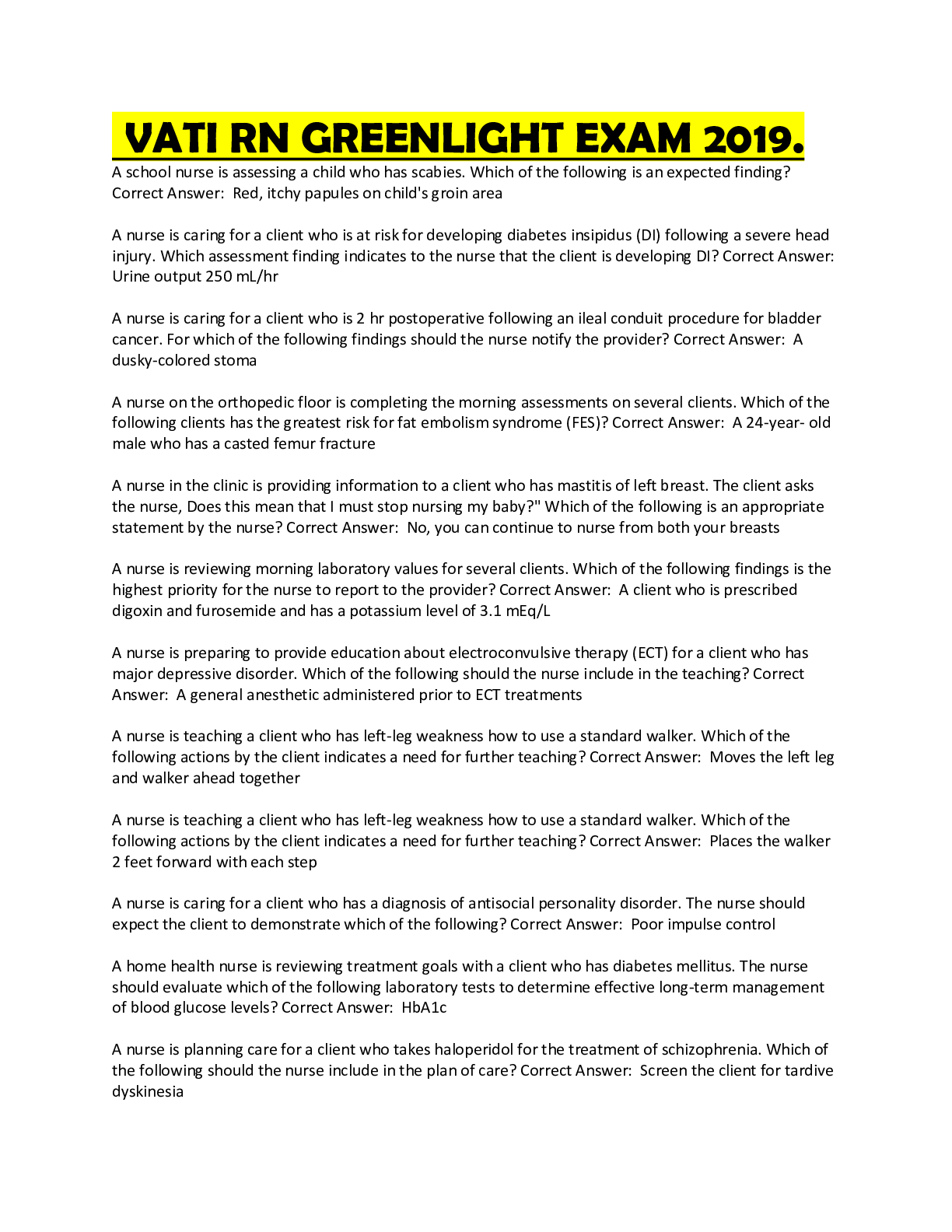
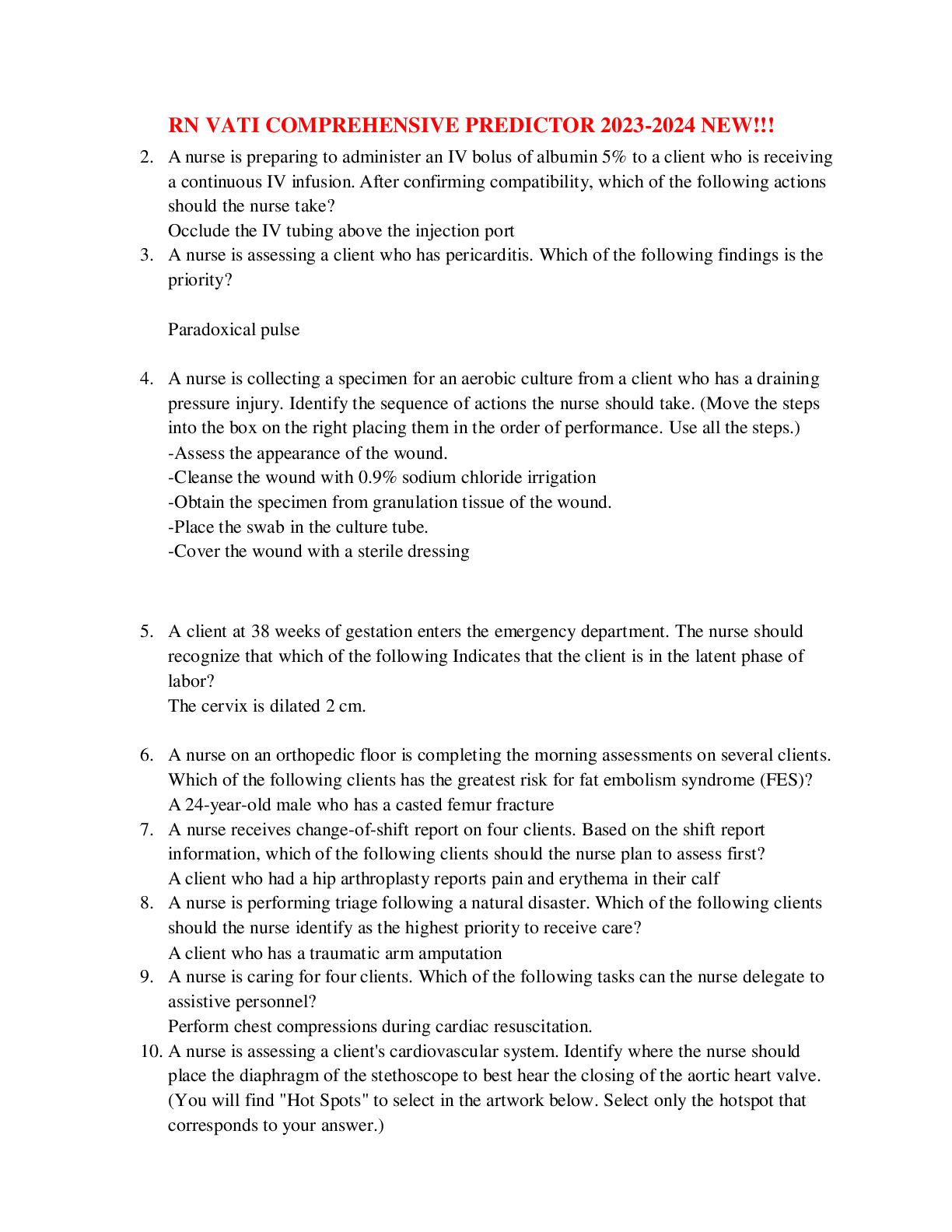
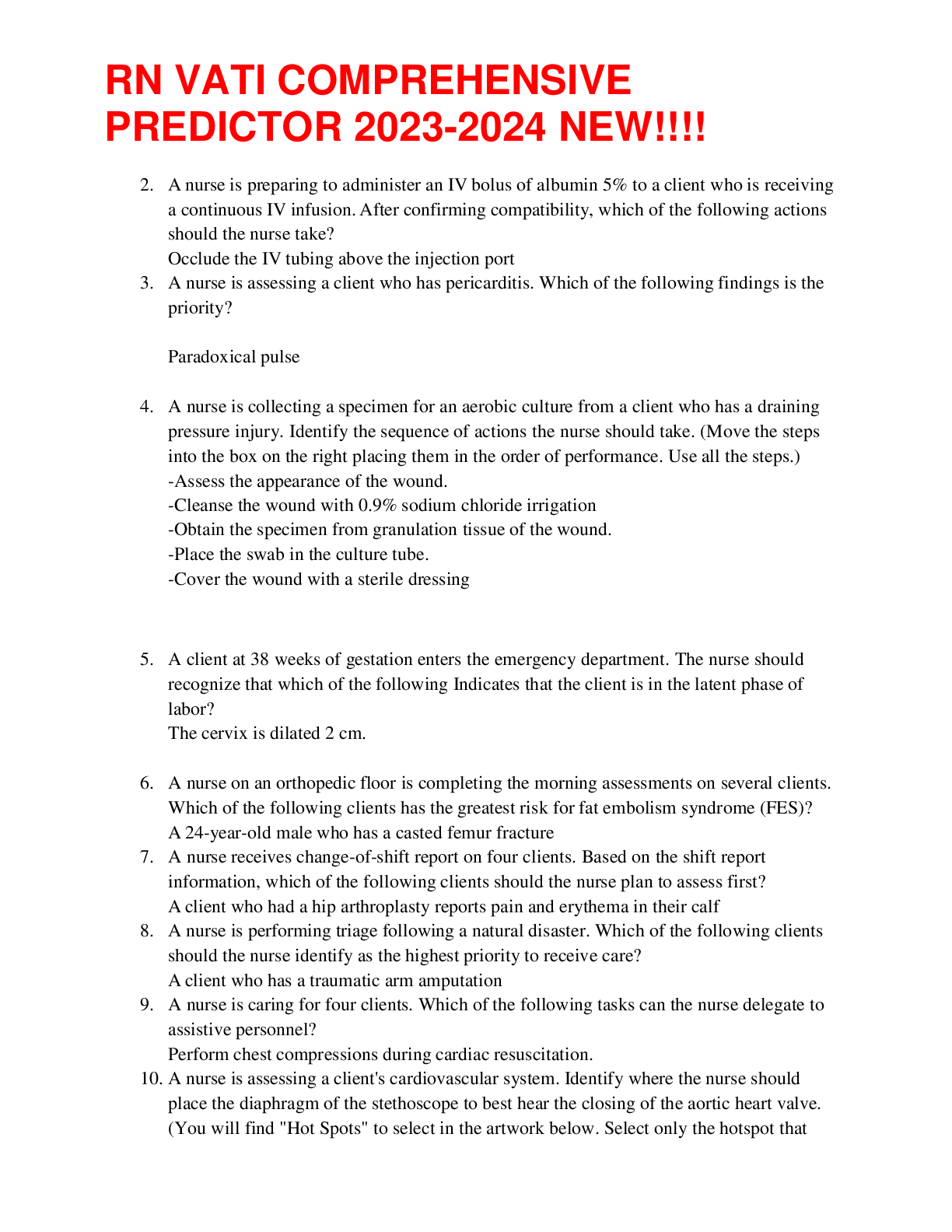
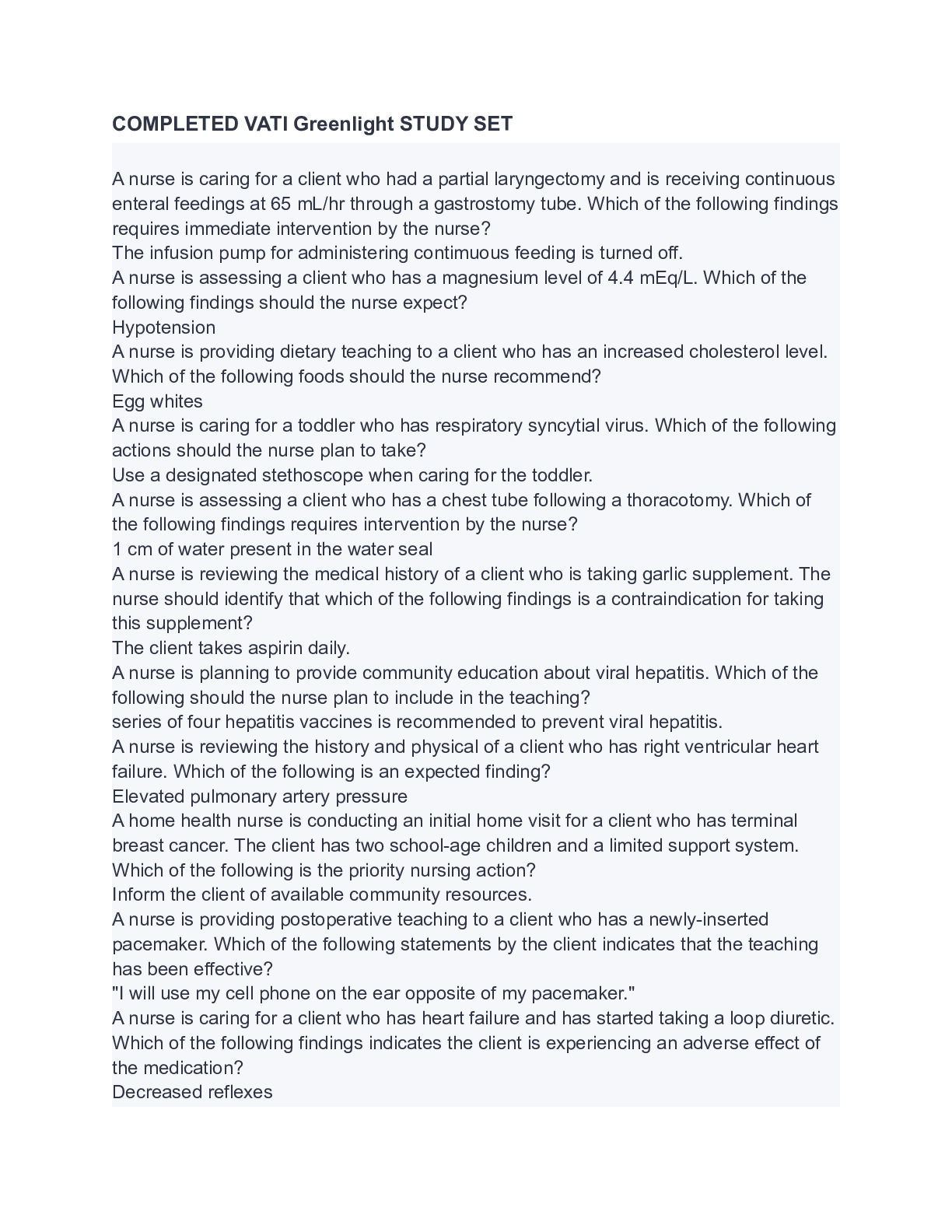
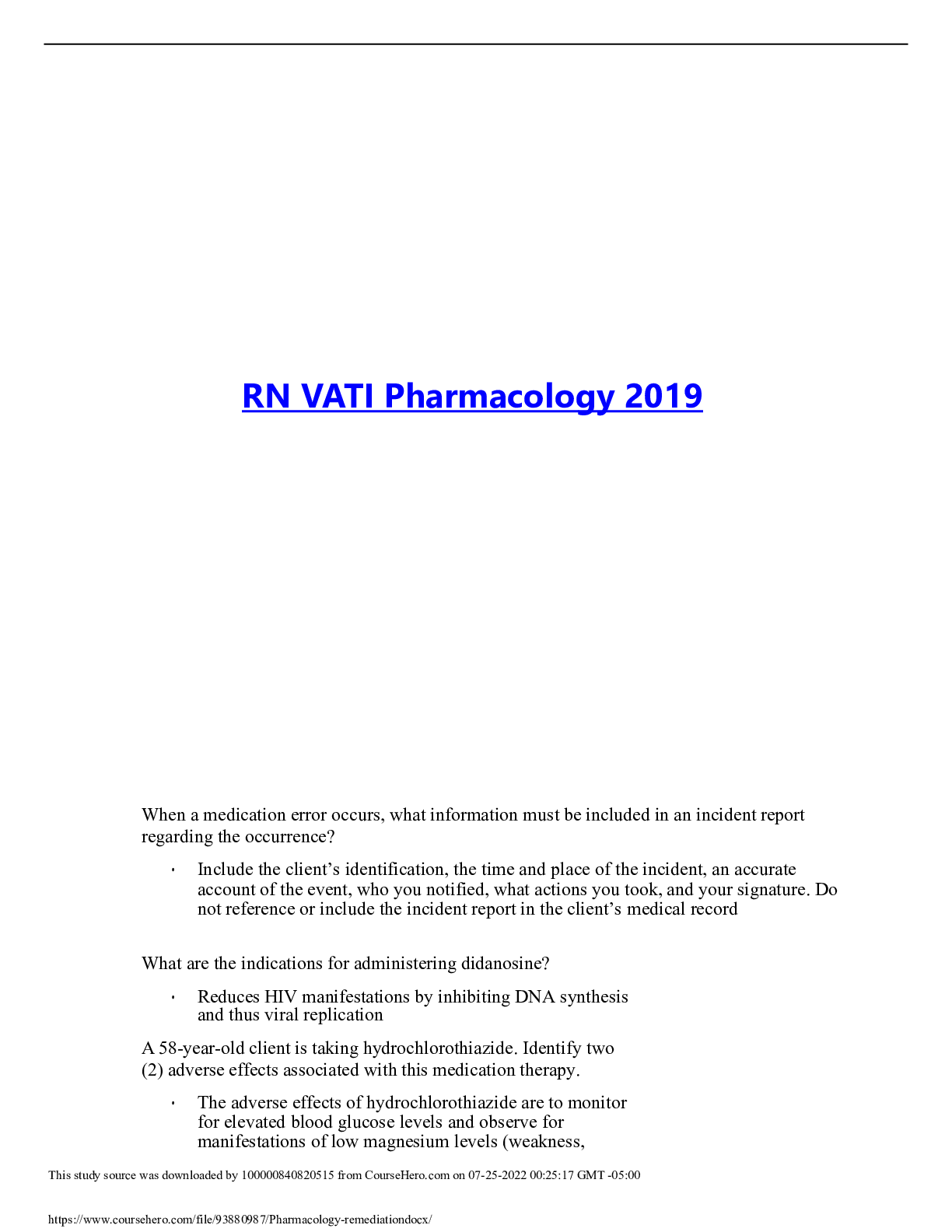
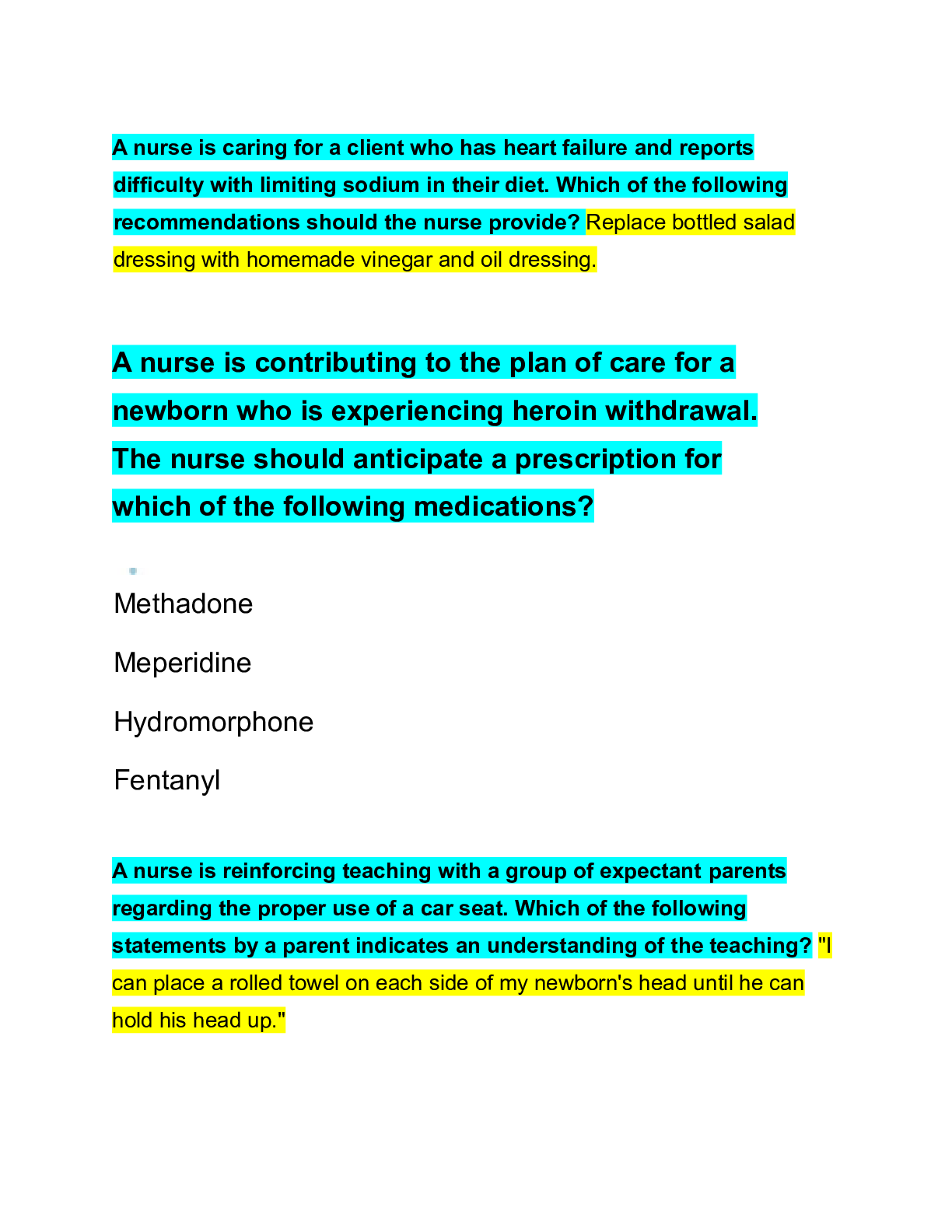

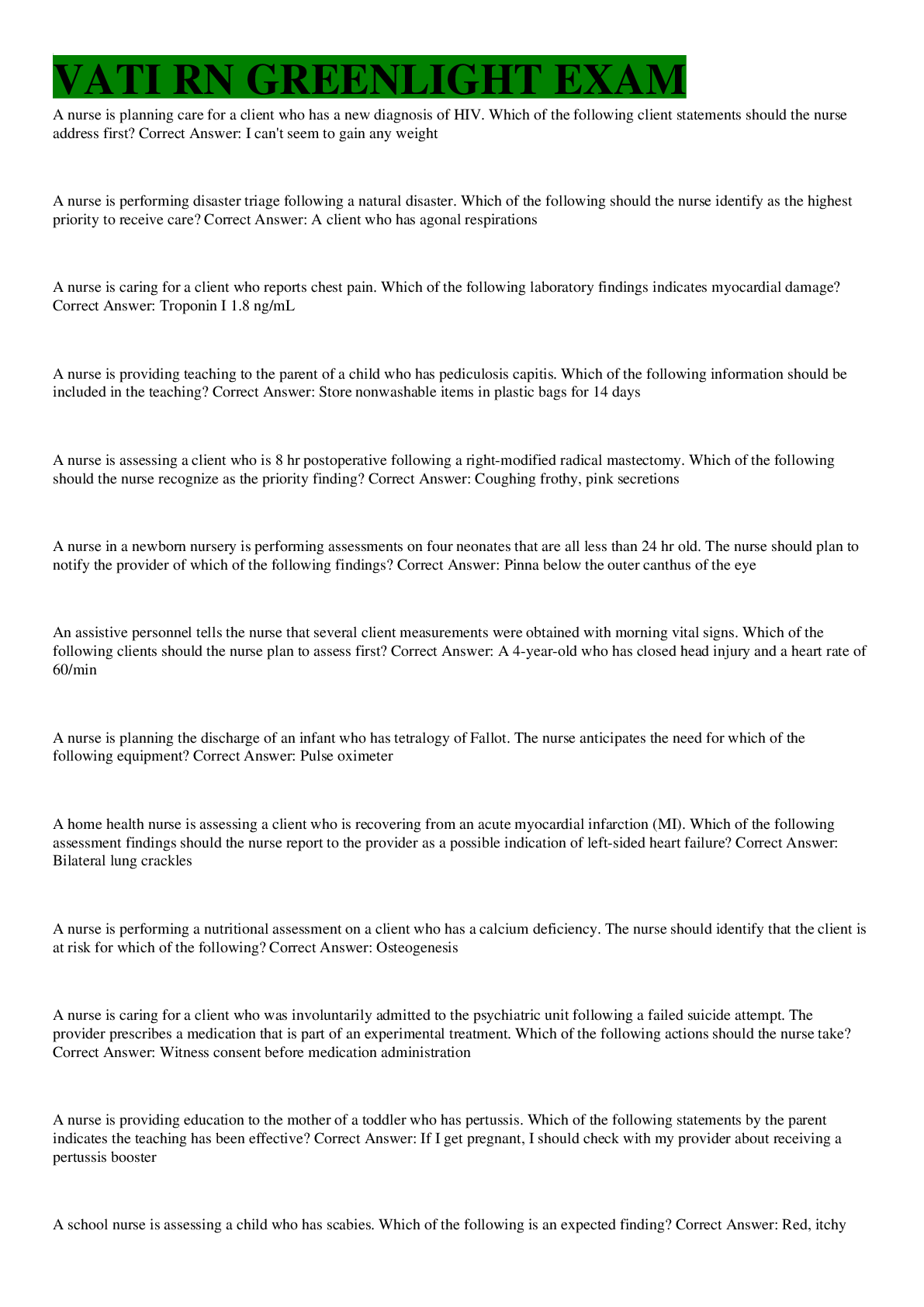
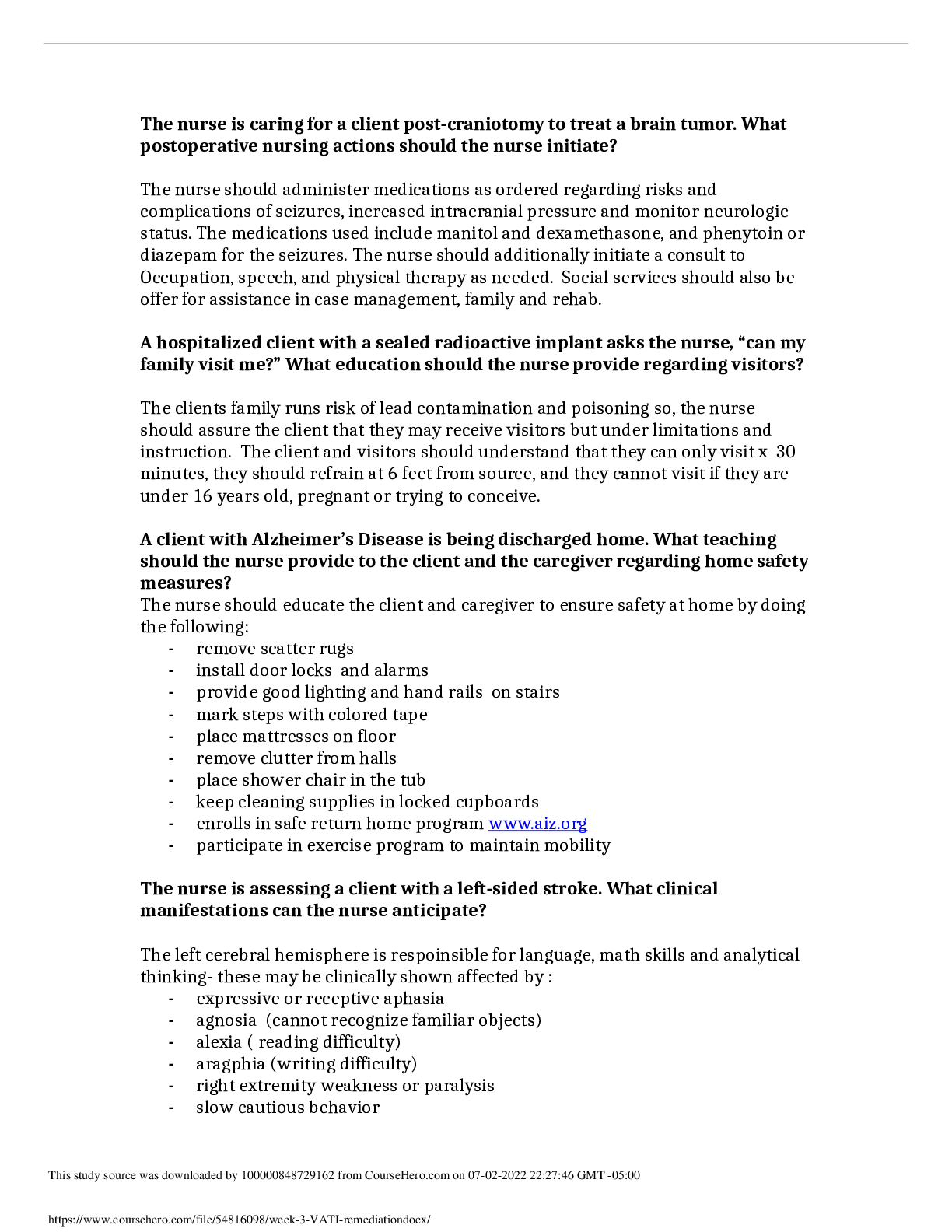
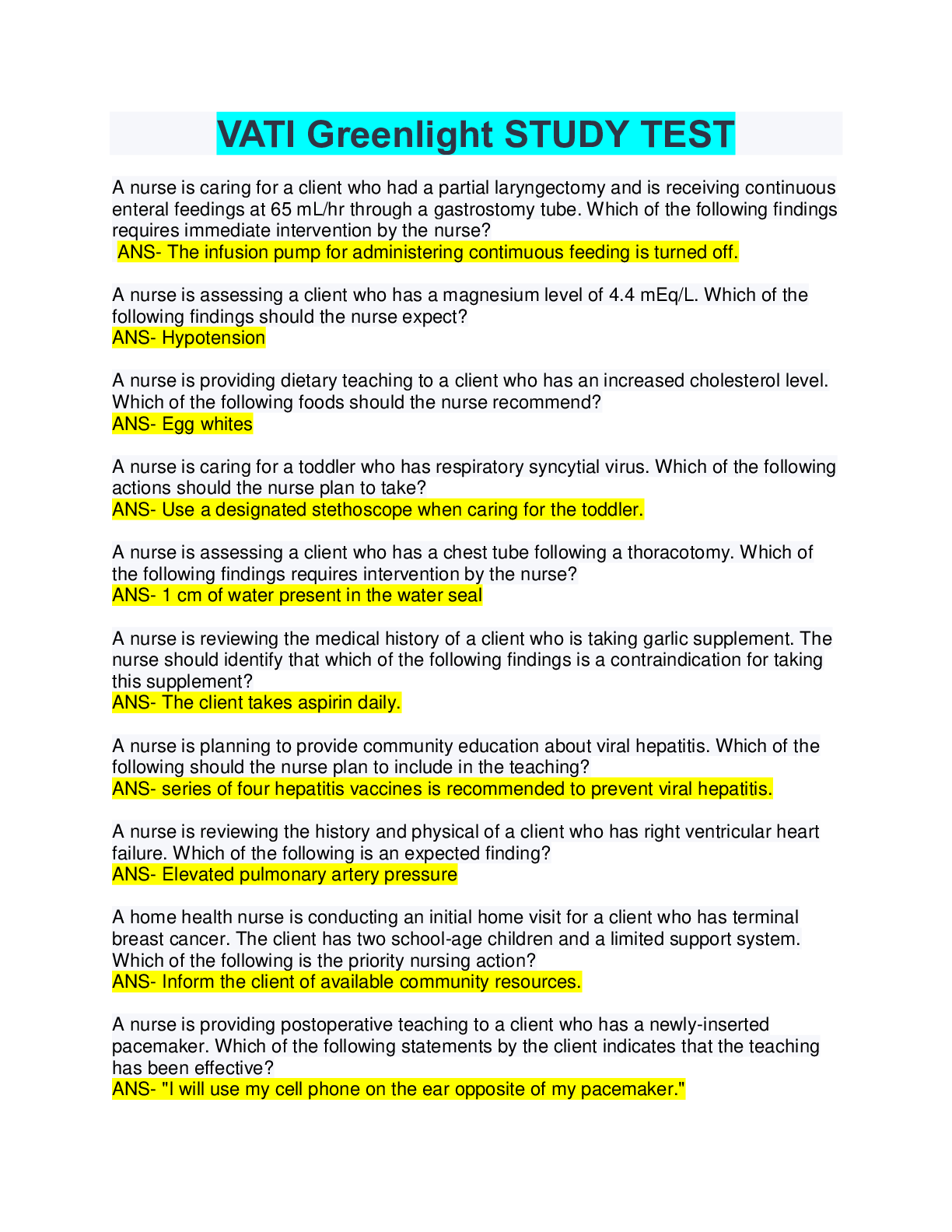
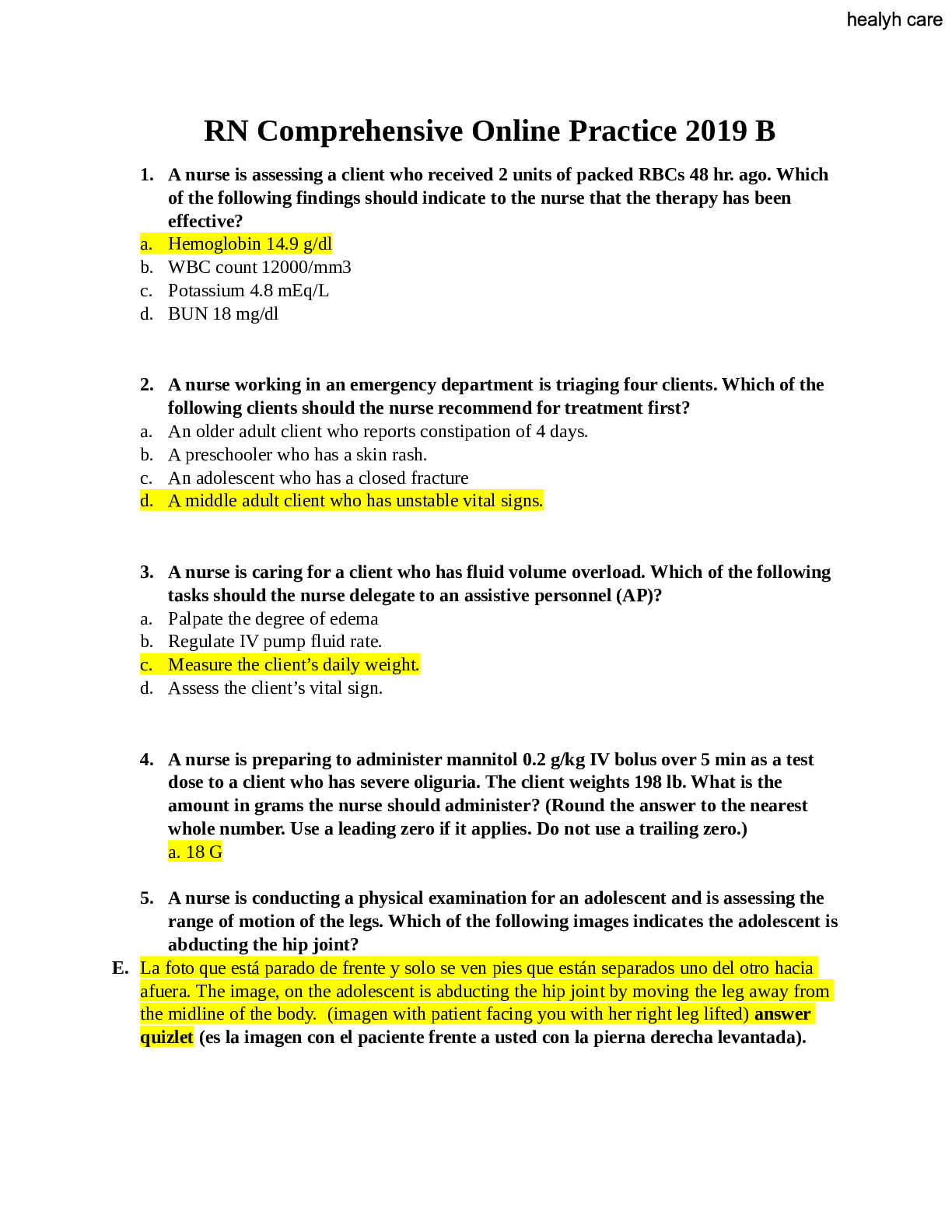


VATI Comprehensive Practice A UPDATED.png)
